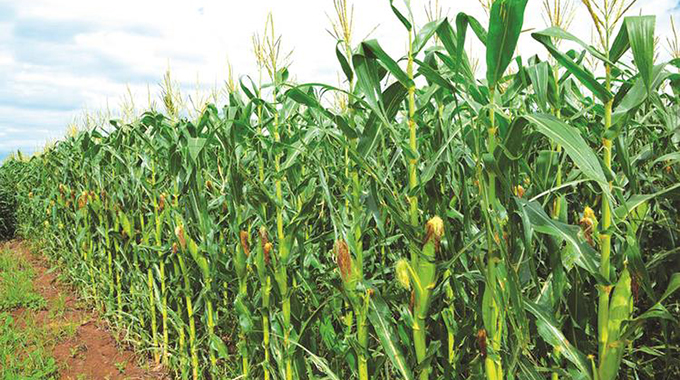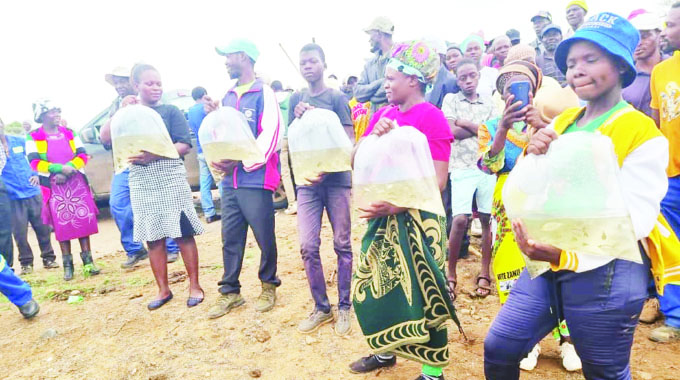Editorial Comment: Proactive action needed to boost agric production

REPORTS of a 5 percent decline in the hectarage for maize in the 2019-20 season owing to a combination of factors, bids for a relook at steps that should be taken to ramp up agricultural production, which is vital to achieve national food security and economic growth.
High input prices, erratic weather patterns and unattractive producer prices in previous years have been cited as the major reasons for waning interest in maize production.
Fortunately, all these negative factors can be dealt with effectively through strategic interventions by stakeholders.
The first perennial hurdle that needs to be addressed is that of inputs procurement. There is need to ensure that inputs are procured at affordable prices. This can be achieved by prioritising the allocation of foreign currency and other materials needed in the manufacturing of the much-needed inputs to maintain the retail price and reduce middlemen.
The second challenge is of dependency on seasonal rainfall. The Government and other stakeholders in the agriculture sector need to make huge investments in irrigation to counter the threat of droughts and climate change. It is encouraging to note that the Government has already initiated this process and is urging all farmers close to water bodies to ensure that they utilise the water. Farmers are being encouraged to mechanise their operations in order to boost production.
Ultimately, there is need to come up with viable producer prices and a strong financing model supported by Government and private sector players to help the country achieve over US$8 billion gross agriculture production value by 2023.
Government has over the years, been assisting targeted farmers to access critical inputs under various schemes, but farmers not covered under the programmes have faced challenges in procuring inputs from the open market, where prices are high, partly because of speculative tendencies by middlemen.
Last season, farmers complained about the high cost of maize seed and fertilisers. For example, the price for a 50kg bag of ammonium nitrate averaged US$27 while Compound D fertiliser was averaging US$24.
It is therefore crucial for Government to engage input suppliers to find ways of keeping prices within affordable limits. Zimbabwe is blessed with abundant water resources and good climatic conditions which should make year-round production of crops, including maize, very possible.
As classified by the International Commission on Large Dams (ICOLD), the country has over 120 large and 7 000 small inland dams which hold in excess of 120 000 mega litres of water and this excludes the 160 000 megalitres in Lake Kariba, which is shared with Zambia. The seven major river systems, namely Save, Runde, Manyame, Gwayi, Mzingwane, Mazowe and Sanyati account for 65 percent of the country’s run-off, most of which can be harnessed for agricultural production.
The time for over-reliance on rain-fed farming must now come to an end, especially in the wake of unpredictable weather patterns brought about by climate change.
Massive investment in irrigation will see farmers increasing yields for domestic consumption and export.
According to the Ministry of Lands, Agriculture, Water and Rural Resettlement, the delayed onset of rains in southern and south-eastern parts of the country as well as regions such as Matabeleland North and Midlands will result in significantly reduced yields.
Some of these areas, particularly Masvingo Province, have huge water reservoirs which can be utilised for irrigation purposes.
High daytime temperatures in these districts can support maize production throughout the year.
A pilot project launched in Masvingo Province in 1992, proved that maize could be grown under irrigation in winter, but unfortunately the programme was not rolled out on a national scale to increase production.
Government recently entered into partnership with giant sugar manufacturer Tongaat Hulett, to produce 1 186 tonnes of maize under the Smart Agriculture concept.
Going forward, this programme needs to be expanded to other regions on a massive scale and where necessary, in collaboration with private investors.
The Zambian government took notes from the Masvingo pilot project and went on to create a greenbelt in Siavonga, just across Lake Kariba, where maize was produced and ironically, some of it for export to Zimbabwe.
Of the 1,5million hectares that were planted under tobacco in the past season, about 106 520 hectares were written off because of dry spells and this could have been averted.
Climate change is real and irrigation is imperative.
Recently, Government announced a producer price of $12 329 for maize. High as it might appear for now, there is no doubt it may not be that attractive by the time deliveries to the Grain Marketing Board (GMB) are done end for this season.
With some farmers having bought inputs using hard currency, the constant shift in the foreign currency exchange rate requires authorities to come up with a system which ensures that producers are cushioned against inflation. Adjusting the producer price every time there is a significant change in the exchange rate should eradicate any fears of losses and spur farmers to produce more.
The issue of agricultural finance has been another major talking point, especially after the implementation of the fast-track land reform programme. Most private financial institutions have been reluctant to fund local farmers, whom they say lack security of tenure.
Government has invested heavily in new farmers with positive results being recorded, especially in the tobacco growing sector, where farmers have surpassed production levels achieved by white former commercial farmers.
As was the case before the land reform programme, the private sector should also be heavily involved in financing agriculture and their concerns around collateral for loans should be addressed.
On a positive note, it is heartening that farmers are diversifying their crop portfolio by moving to the production of traditional grains such as sorghum, pearl millet, finger millet and even rice.
To boost production, GMB has been buying traditional grains at about the same price as maize and this is commendable.








Comments